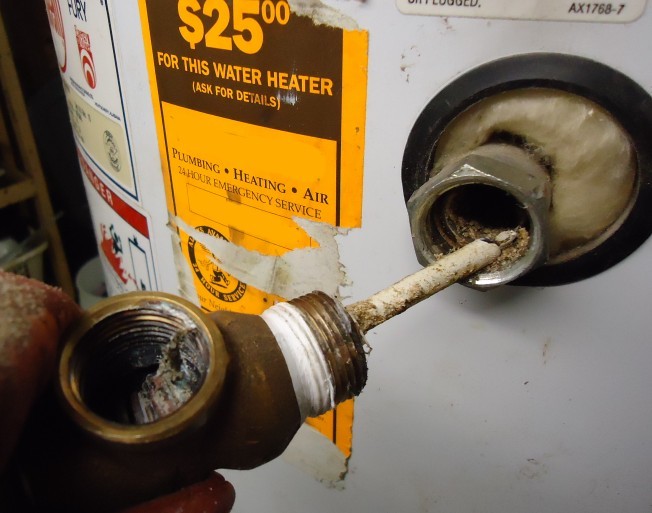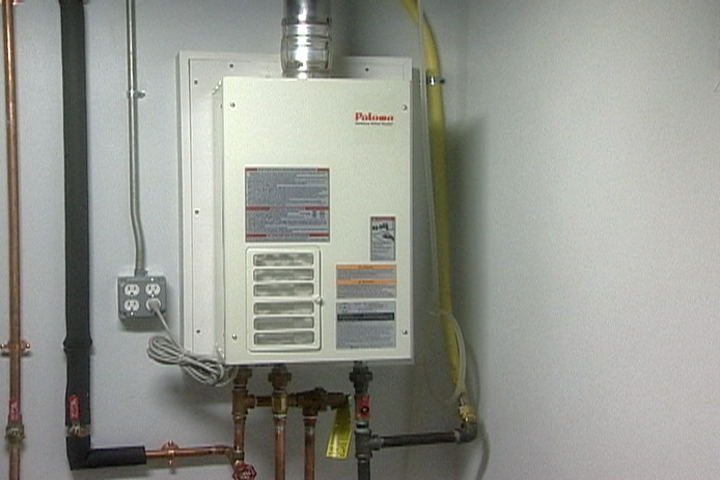Straightforward Ways to Maintain Your Home's Hot Water System Properly
Straightforward Ways to Maintain Your Home's Hot Water System Properly
Blog Article
We've stumbled on this article about How to Maintain Your Water Heater & Prolong its Life listed below on the internet and decided it made perfect sense to quickly share it with you on this page.

Warm water is necessary for everyday comfort, whether it's for a revitalizing shower or cleaning dishes. To ensure your warm water system runs effectively and lasts longer, normal maintenance is key. This write-up supplies functional suggestions and understandings on exactly how to maintain your home's warm water system to avoid disturbances and pricey repair services.
Introduction
Keeping your home's hot water system could seem daunting, however with a few simple steps, you can guarantee it operates efficiently for many years to come. This overview covers everything from comprehending your hot water system to do it yourself maintenance pointers and understanding when to contact specialist help.
Relevance of Preserving Your Warm Water System
Routine upkeep not only expands the life-span of your warm water system but additionally ensures it operates successfully. Ignoring upkeep can lead to lowered performance, greater energy bills, and even early failure of the system.
Signs Your Warm Water System Needs Maintenance
Recognizing when your warm water system needs focus can stop major issues. Watch out for indicators such as irregular water temperature, unusual sounds from the heating system, or rusty water.
Understanding Your Hot Water System
Before diving into upkeep jobs, it's helpful to understand the standard components of your hot water system. Normally, this consists of the hot water heater itself, pipes, anode rods, and temperature controls.
Month-to-month Upkeep Tasks
Regular monthly checks can assist catch small problems prior to they escalate.
Flushing the Water Heater
Flushing your water heater eliminates sediment accumulation, enhancing performance and lengthening its life.
Monitoring and Changing Anode Rods
Anode poles stop deterioration inside the container. Examining and replacing them when worn out is essential.
Examining and Changing Temperature Settings
Adjusting the temperature level settings guarantees ideal performance and safety.
Do It Yourself Tips for Upkeep
You can do a number of maintenance tasks yourself to keep your warm water system in leading problem.
Looking for Leaks
Consistently evaluate pipes and links for leakages, as these can cause water damage and greater bills.
Examining Stress Alleviation Valves
Evaluating the pressure relief valve guarantees it operates properly and avoids excessive pressure buildup.
Protecting Pipes
Insulating warm water pipelines minimizes warm loss and can conserve energy.
When to Call a Specialist
While do it yourself maintenance is useful, some concerns need expert competence.
Complicated Issues Calling For Expert Help
Examples include significant leaks, electrical troubles, or if your hot water heater is regularly underperforming.
Regular Professional Upkeep Perks
Expert maintenance can include extensive examinations, tune-ups, and guaranteeing conformity with safety and security criteria.
Conclusion
Regular maintenance of your home's warm water system is essential for effectiveness, long life, and price savings. By complying with these suggestions and understanding when to seek expert aid, you can make sure a reputable supply of hot water without unanticipated interruptions.
Water Heater Maintenance: The Basics
Maintaining your water heater will ensure it operates efficiently and has a longer lifespan. Neglecting regular maintenance can lead to costly repairs and an even bigger chunk of your savings if you have to replace it sooner than necessary. But there’s good news: Most water heater maintenance tasks are relatively simple and easy for homeowners with basic DIY skills.
Flush the Water Heater
Over time, sediment and minerals can build up in the tank, reducing its efficiency and potentially causing damage. To flush the tank, turn off the power or gas supply, attach a hose to the drain valve near the bottom and open the valve to drain the water until it runs clear. Ideally, flush the tank annually.
Replace the Anode Rod
The anode rod is a sacrificial metal rod that helps prevent corrosion inside the tank. Inspect and replace it every three to five years or per the manufacturer's recommendation. To replace the anode rod, turn off the power or gas supply, drain a few gallons of water from the tank, unscrew the old rod and replace it with a new one. If the anode rod is significantly corroded or covered in calcium buildup, it's a sign the water heater may need to be replaced soon.
Tune-Up
A yearly tune-up can help identify potential issues and ensure your water heater operates at peak efficiency. This typically involves checking the thermostat, burner assembly (for gas heaters) and any other components specified by the manufacturer. During a tune-up, the technician may also clean the burner and adjust the pilot light (for gas heaters) or examine the heating elements (for electric heaters).
How to Maintain Your Water Heater
Insulate the tank. Insulating the tank can improve energy efficiency and reduce heat loss, saving you money on energy bills. You can purchase precut insulation blankets designed specifically for water heaters or use standard fiberglass insulation wrapped securely around the tank. Check the temperature. The recommended water temperature for most households is around 120 degrees Fahrenheit (49 degrees Celsius). Higher temperatures can increase energy costs and potentially cause scalding. Use a kitchen thermometer to check the temperature at the faucet nearest the water heater. Monitor water pressure. Excessive water pressure can strain the water heater and cause leaks or even tank failure. Install a pressure-reducing valve if necessary. The ideal water pressure range is between 60 and 70 PSI (pounds per square inch). Test the temperature and pressure (T&P) relief valve. The T&P relief valve is a safety feature that releases pressure if the tank gets too hot or the pressure builds up too high. Test it annually by lifting the lever and allowing a small amount of water to release. Replace the valve if it doesn't release water or reseal properly. Check for leaks. Regularly inspect the tank, pipes and fittings for leaks or corrosion. Deal with issues promptly to prevent further damage. Even a small leak can lead to significant water damage over time. Consider a tankless water heater. If your traditional tank-style water heater is nearing the end of its lifespan ( typically 10 years), consider replacing it with a tankless water heater. These units heat water on demand, reducing standby energy losses and potentially saving you money on your energy bills. Schedule professional maintenance. While homeowners can perform many water heater maintenance tasks, it's still a good idea to schedule professional maintenance every few years. A plumber or HVAC technician can thoroughly inspect the unit, identify potential issues and ensure it operates safely and efficiently. https://www.homeserve.com/en-us/blog/home-improvement/hot-water-heater-maintanence/

I am just very involved in Tips For Maintaining Your Hot Water Heater and I really hope you liked the entry. For those who enjoyed our post please be sure to share it. We recognize the value of reading our article about What Kind of Maintenance Do Water Heaters Need?.
Get Estimate Report this page